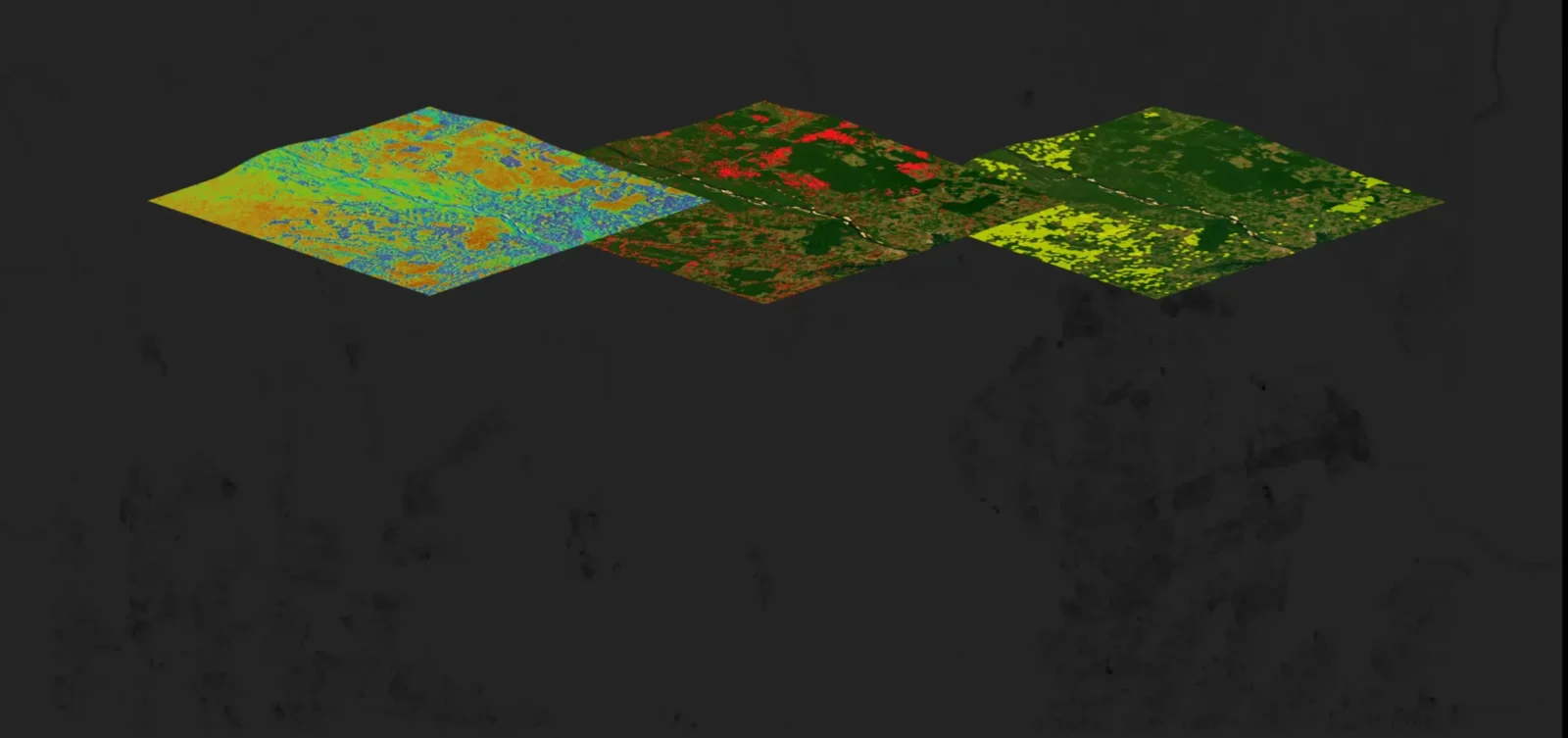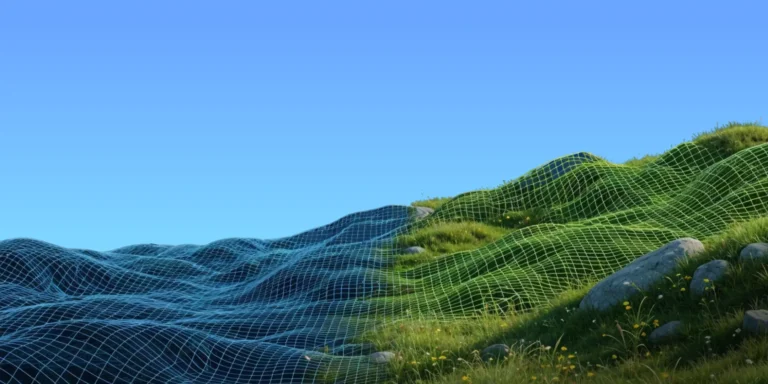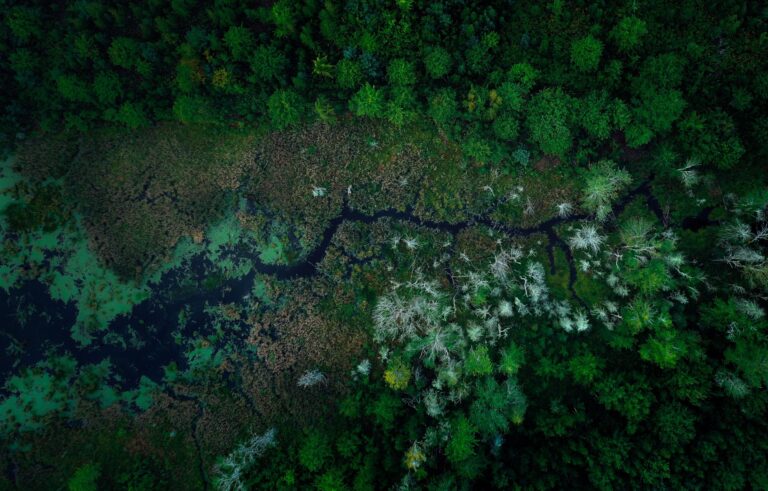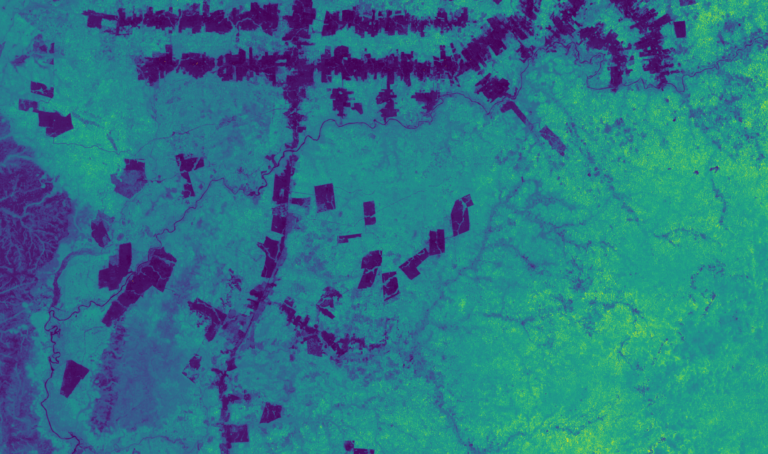Today, issuing credits for a forest carbon project can take years and cost hundreds of thousands of dollars. With new digital monitoring, reporting, and verification (DMRV) platforms, credit issuance could take only days at a fraction of the cost. Pachama envisions a future of high-integrity, transparent carbon crediting at the speed and scale the planet demands. This modern future will bring more high-quality projects to the market, allow businesses to make more informed carbon investment decisions, and drive more funding to the communities restoring and protecting the land.
Restoring Nature to Help Solve Climate Change
The scientific evidence accumulated over the last several decades has become resoundingly clear. To avoid the worst impacts of climate change, we need to drastically reduce carbon emissions (1). Pachama was founded to accelerate progress toward this goal. Our mission is to help solve climate change by restoring nature.
Each year deforestation accounts for as much as 10-20% of global carbon emissions (2).1 Ongoing deforestation also continues to threaten species with extinction and encroaches on the rights of indigenous and rural communities who depend on forests for their livelihoods.
The market for forest carbon, if properly designed, presents a tremendous opportunity to change land use incentives to reverse these trends. By compensating landowners for protecting and restoring forests, the market could reduce the amount of carbon in the atmosphere while creating space for nature and forest communities to thrive.
However, today’s carbon market has not managed to make a significant dent in global carbon emissions. The market has also suffered from well-publicized concerns about credit quality, damaging trust in the market.2
A Digital Future for Carbon Markets
Pachama is working to build a future of high-integrity, digital carbon crediting that can scale at the speed necessary to address climate change. An effective carbon market that can restore nature globally must be:
1. High-Quality
Every credit represents an actual reduction in carbon emissions to the atmosphere. This is clearly the most important market attribute. If a credit’s carbon equivalence proves dubious, the credit may actually increase the amount of carbon in the atmosphere, because buyers use the credit to offset their own emissions. The Pachama Quality Standard defines five pillars of high-quality crediting: estimated emissions reductions must be accurate, additional, durable, net, and produce benefits beyond carbon.3
2. Transparent
Buyers often describe today’s crediting calculations as hopelessly complicated and difficult to understand. When purchasing carbon credits, a buyer should be able to easily understand what it is they are buying, that is, what a credit represents and how it’s calculated. The complexity of crediting today inevitably magnifies doubts about credit quality.
3. Scalable
The market for forest carbon has grown rapidly, yet it currently offsets less than a few tenths of a percent of global carbon emissions.4 Recent analyses suggest the market has the potential to drive net deforestation to zero and reforest an area about 10 times the size of France (4–7). This requires scaling the current market by at least 100X.
How Digital Platforms can Modernize Crediting
Credit issuance is ultimately a process of monitoring, reporting, and verification (MRV): monitoring to calculate a project’s emissions reductions (i.e., credits), reporting to document the calculations before a credit registry, and verification of the calculations by independent auditors. Credit registries, such as Verra, now refer to future digital crediting platforms as digital MRV (DMRV) platforms.
DMRV platforms would modernize credit issuance in at least 4 critical ways.
1. Shift from manual data collection to satellite observation
Despite remarkable advances in satellites and machine learning, credit calculations today still rely on costly, labor-intensive methods. Field crews measure individual trees by hand to inventory carbon stocks over a small sample of a project’s area. These inventories cost tens to hundreds of thousands of dollars and can take months or even years to complete. The inventories must be repeated at each credit issuance, typically every 5-10 years, over a project’s lifetime.
Satellite-based carbon mapping offers a scalable, cost-efficient approach to crediting. Satellites are also essential to enhancing credit quality, because they can observe forest change both within a project and the surrounding region, enabling a data-driven approach to computing a project’s emissions impact. Without a satellite view of the landscape, status quo crediting often relies on assumptions that can result in over-crediting (8–10).
2. Shift from inconsistent, manual calculation to uniform, automated calculation
Today, project developers run credit calculations in spreadsheets, which auditors then review line-by-line. Though rules vary by registry, nearly all allow significant room to adjust calculations on a project-by-project basis. Crediting volumes can vary widely for the same project depending on who performs the calculations. With digital platforms, credit calculations would be automated, standardizing crediting across projects and eliminating opportunities to manipulate crediting.
3. Shift from auditing projects to certifying platforms
With a shift to automated credit calculation, platform certification would replace project-by-project spreadsheet audits, speeding up time to issuance. Periodic platform certification would verify the accuracy of all calculations before a platform can participate in the market.5 Pachama recognizes that not all project information can be verified by machine. But, we think high-quality, transparent, and scalable crediting requires standardizing calculations to the greatest extent possible.
4. Shift from static documents to interactive, digital visualization
Today, if you want to understand how credits are calculated for a project, you have to read through hundreds of pages of registry documents and trace calculations through enormous spreadsheets. Satellite observations hosted on a user-friendly platform with interactive data visualizations would allow buyers, landowners, and the public to “see” the impact of carbon projects for themselves.
Realizing our Vision: a Pachama DMRV Platform
Since our founding in 2018, Pachama has sought to lead the way in DMRV and become the first registry-certified DMRV platform. To describe how DMRV platforms would work in practice, it’s worth going back to basics and reviewing what a carbon credit is supposed to represent.
What is a carbon credit?
A forest carbon credit is an emissions reduction due to forest conservation or reforestation that would not have occurred without carbon crediting. The carbon emissions (or uptake in the case of reforestation) expected in the absence of the project is called the baseline.
At its simplest, credit issuance equals: baseline emissions minus project emissions.6 However, we also have to deduct emissions that “leak out” of the project, because stopping deforestation in the project may cause some deforestation to just move elsewhere. This is called leakage.
So total credit issuance can be reduced to a single core crediting equation.
A Core Crediting Equation
Pachama’s vision is to distill today’s long, convoluted methodology documents into a single crediting equation. With some updates to existing crediting rules, this core equation would express exactly how a carbon credit is calculated, allowing a buyer to immediately understand what it is they’re buying.7 It’s important to note that this equation is the same for all project types8 and locations, greatly simplifying things for buyers and the general public.
To calculate each term in this equation9, a DMRV must produce three core outputs: an estimate of baseline emissions, a map of forest carbon, and a map of forest cover change (deforestation and/or reforestation) to know where carbon has been lost or gained.10, 11
This core crediting equation also vastly simplifies the process for verifying credit calculations. How so? By comparing each core output – baseline, forest carbon, and forest cover change – against a third-party global verification database, a buyer would immediately know the uncertainty of each term in the core crediting equation.14, 15
This global verification database would contain independent datasets for validating satellite-derived outputs. For example, carbon maps would be validated against estimates from field measurements and laser scans. Forest cover change maps would be validated against satellite imagery in which deforestation and reforestation have been delineated by hand. Standardized validation against the same third-party database would also enhance credit fungibility.
Pachama envisions this transparent, simplified approach to crediting coming together in a registry-integrated system that provides a modern, intuitive experience for both project developers and buyers.
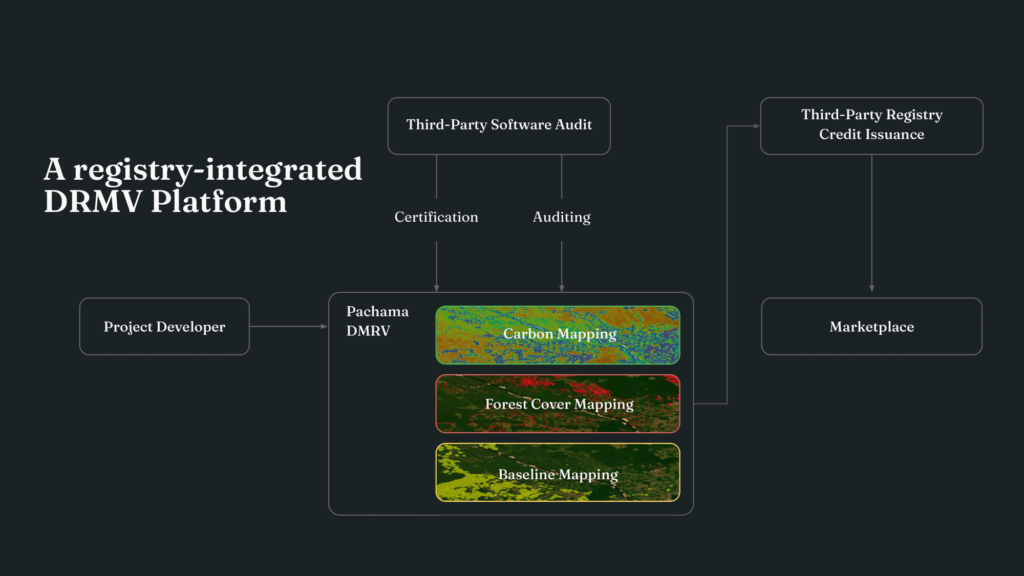
Unlocking the Full Potential of Carbon Markets
To realize nature’s full potential as a climate solution, we need modern digital crediting to scale the market by at least 100x and drastically reduce the time and cost of issuance. Pachama is working to make this a reality by developing the technology to compute each term in the core crediting equation. You can read more about our ongoing work on algorithmic baselines and forest carbon mapping in previous blog posts.
Our vision for high-quality, transparent, and scalable crediting requires some changes to the way credits are currently issued and audited. Pachama recently launched a pilot DMRV collaboration with Verra and is an active member of Verra’s DMRV Working Group. We are committed to collaborating with a broad swath of stakeholders to make carbon markets work.
Pachama seeks to lay the groundwork for a registry-integrated DMRV platform that can issue high-quality credits at the speed and scale the planet demands. Modernizing and reforming the carbon market is ultimately central to Pachama’s mission to restore nature to help solve climate change.
Want to dive deeper into Pachama’s tech?
See what core technology Pachama is developing, how we evaluate project quality, and why we’re building the next generation of nature-based projects.
When forests are cleared, the carbon stored in the trees is released to the atmosphere. Fires to clear forest for agriculture directly release carbon to the atmosphere. However, deforestation for timber and paper production also releases carbon, as the harvest products decompose over time: toilet paper, napkins, and disposable paper packaging on short time scales of several months to a few years; cardboard, office paper, and newspaper over a slightly longer time scale of years as fibers deteriorate with each recycling; and more durable wood products, such as furniture, over a time scale of decades, although this carbon too eventually reaches the atmosphere.
Several research publications and news articles have indicated the market suffers from significant over-crediting due to inaccurate baselines used to compute project emissions reductions. Pachama has long recognized this problem, which is why we have been developing algorithmic, data-driven baselines to eliminate over-crediting.
Accurate: emissions reductions are conservatively quantified. Each credit represents at least 1 metric ton of carbon. Additional: emissions reductions would not have occurred without carbon crediting. Durable: emissions reductions are long-lasting, ensured by ongoing monitoring and public reporting. Net: emissions reductions have not increased deforestation elsewhere, thus producing no net climate benefit. Beyond Carbon: the project causes no net harm and delivers biodiversity and community benefits.
Annual issuance of forest carbon credits is <1% of annual fossil fuel emissions. Ecosystem Marketplace’s State of the Voluntary Carbon Markets reported credit issuance for forest carbon projects of 111.5 million metric tons CO2 in 2021 (through August). Credit issuance in 2019 and 2020 was 36.7 and 48.1 million metric tons CO2, respectively. Issuance representing actual emissions reductions is much lower. Less than ⅓ of the >150 projects Pachama has evaluated to date meet the Pachama Quality Standard. In 2021, global fossil fuel emissions totaled 36 billion metric tons CO2.(2, 3)
Platform certification could also include random in-depth, manual audits of individual projects.
For a forest conservation project, project emissions are ideally near zero, as the project seeks to stop deforestation. Imagine a project with baseline emissions of 30,000 metric tons CO2 in any given year. Gross annual crediting equals baseline minus project emissions. So crediting equals 30,000 metric tons CO2 (30,000 – 0 = 30,000). Conversely, imagine a reforestation project with carbon uptake of 30,000 metric tons CO2 in any given year and baseline uptake of 2,000 metric tons CO2. By accounting convention, we treat carbon uptake as negative. So crediting equals 28,000 metric tons CO2 (-2,000 – -30,000 = 28,000).
New Verra reforestation and consolidated REDD+ avoided deforestation methodologies currently under development could be compatible with a single core crediting equation.
Project types included avoided deforestation, reforestation, and improved forest management projects.
The core crediting equation represents gross crediting. Buffer pool contributions would be deducted from this gross issuance. As presented, the equation does not adjust emissions for long-lived wood products. The most conservative crediting would only adjust baseline emissions. A standardized wood products calculation using a common dataset would ensure consistent crediting across projects and prevent credit manipulation.
Although registries often require deforestation/reforestation maps to compute carbon gain and loss, they are not strictly necessary. Carbon gains and losses could be computed by differencing forest carbon over time.
Leakage is best solved through harmonized accounting between the jurisdiction-level and project-level carbon markets. However, project-level crediting can at least ensure a standardized, data-driven approach to calculating leakage.
Pachama is also committed to publicly releasing detailed technical documentation – Algorithm Methods Documents (AMD) and Algorithm Validation Documents (AVD) – describing how we compute and validate each term in the core crediting equation.
Crediting could be adjusted to account for the uncertainty in the three core DMRV outputs: baseline, forest carbon, and deforestation/reforestation.
H.-O. Pörtner, et al., Climate Change 2022: Impacts, Adaptation and Vulnerability (Cambridge University Press, 2022).
P. Friedlingstein, et al., Global carbon budget 2021. Earth System Science Data 14, 1917–2005 (2022).
Z. Liu, Z. Deng, S. J. Davis, C. Giron, P. Ciais, Monitoring global carbon emissions in 2021. Nat Rev Earth Environ 3, 217–219 (2022).
C. A. J. Girardin, et al., Nature-based solutions can help cool the planet — if we act now. Nature Publishing Group UK (2021) https:/doi.org/10.1038/d41586-021-01241-2 (September 12, 2022).
B. W. Griscom, et al., Natural climate solutions. Proc. Natl. Acad. Sci. U. S. A. 114, 11645–11650 (2017).
B. W. Griscom, et al., National mitigation potential from natural climate solutions in the tropics. Philos. Trans. R. Soc. Lond. B Biol. Sci. 375, 20190126 (2020).
W. S. Walker, et al., The global potential for increased storage of carbon on land. Proceedings of the National Academy of Sciences 119, e2111312119 (2022).
T. A. P. West, J. Börner, E. O. Sills, A. Kontoleon, Overstated carbon emission reductions from voluntary REDD+ projects in the Brazilian Amazon. Proc. Natl. Acad. Sci. U. S. A. 117, 24188–24194 (2020).
T. A. P. West, et al., Action needed to make carbon offsets from tropical forest conservation work for climate change mitigation (2023)
https:/doi.org/10.48550/ARXIV.2301.03354.A. Guizar‐Coutiño, J. P. G. Jones, A. Balmford, R. Carmenta, D. A. Coomes, A global evaluation of the effectiveness of voluntary REDD projects at reducing deforestation and degradation in the moist tropics. Conservation Biology 36 (2022).

